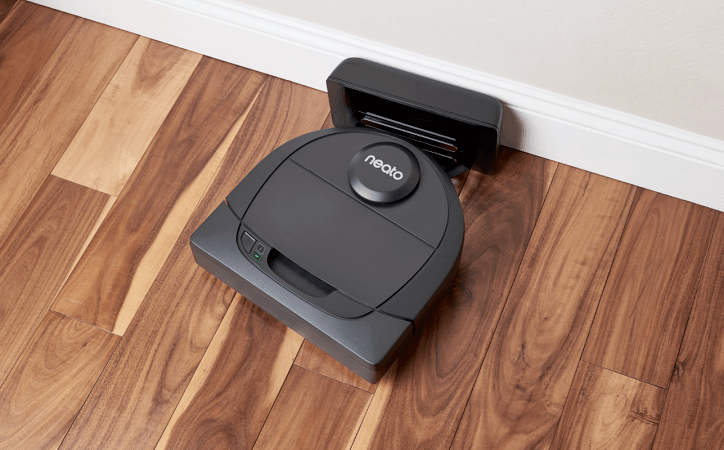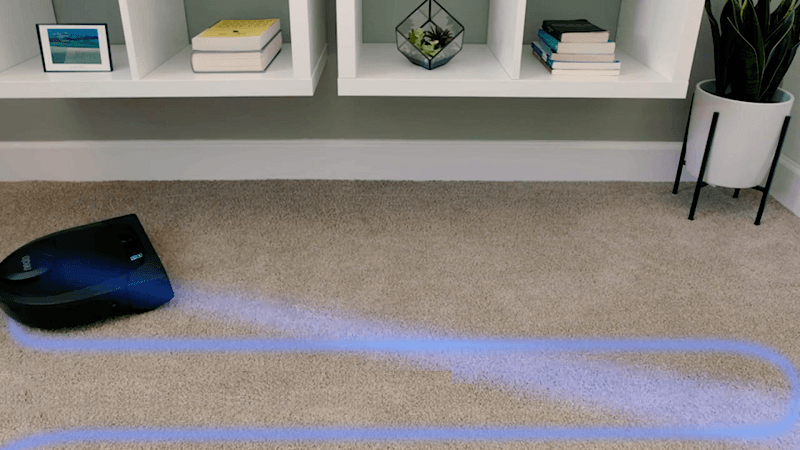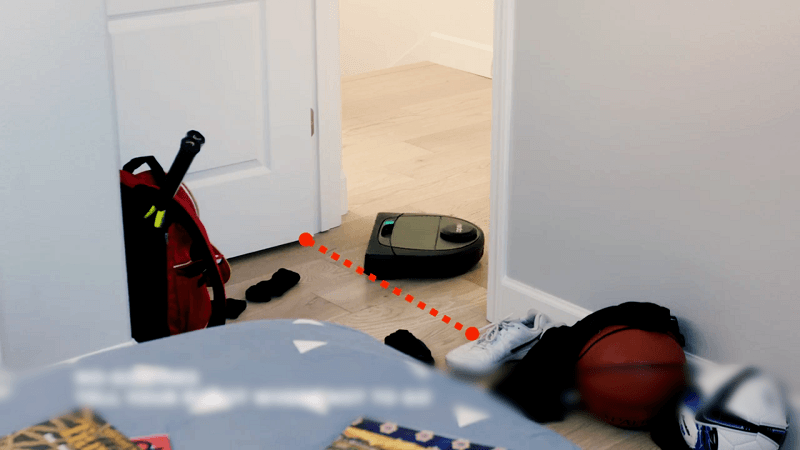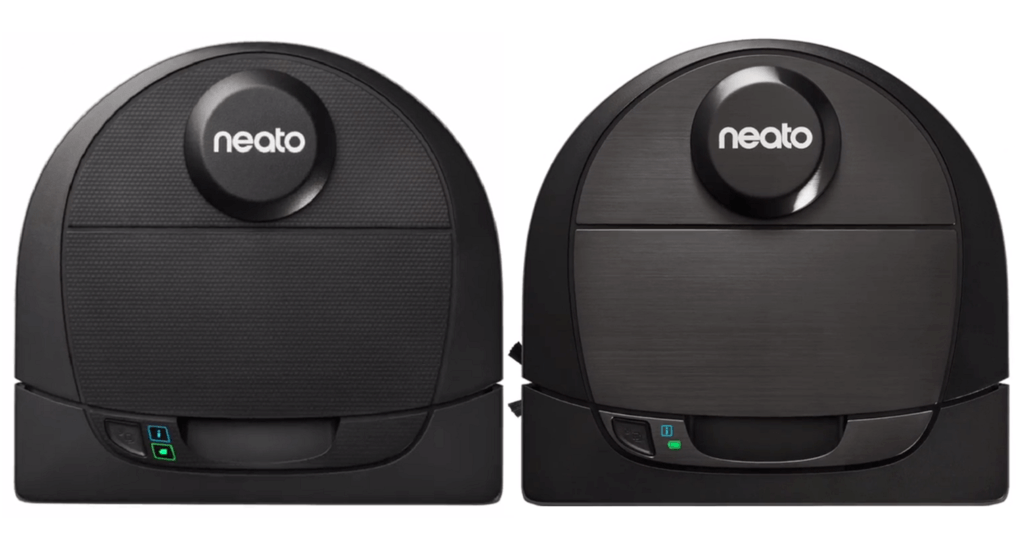It is no secret that the Neato Botvac D6 Connected was designed to help homes with shedding pets. It is also well known that the D4 Connected is designed to have a budget-friendly reach to get into more homes.
Aside from a great marketing tactic, making the D4 more affordable and still possess most of the abilities that the higher priced models have. The D6 is a lower cost version of the D7 Connected, which is the flagship model of the D series models.
Which model is the right one for you? That may come down to a personal preference or a limited budget. By the end of this article, you will have a better idea of what each model can do and have a clearer direction of which buy button you want to click on.
Contents
The Differences
Since budget models don’t have all the features of the more expensive counterparts, there are going to be a lot of differences.
- The D4 Connected has a smaller cleaning path (10.3 inches) compared to the D6 cleaning path (12 inches).
- The D6 has a higher quality filter than the D4 connected does.
- There are different brushes for agitation and debris extraction in the two models.
- The Neato D4 Connected doesn’t have a side brush like the Neato D6 Connected does.
- Neato’s D4 has a smaller battery than the D6, as well.
- The D6 Connected has the ability to map multiple floors that the D4 Connected can’t do.
- When you unbox the D6, you will find an extra side brush, a brush roll cleaning kit and boundary marker tape that you won’t find in the box with the D4.
The Similarities
Because each of the two models is made by Neato, there will be some things in common as well. These include such things as:
- Both models have a large 0.7L collection bin.
- Each of the vacuums will be able to recharge their batteries and resume cleaning if needed.
- There are four cleaning options for each version of the robots.
- Both the D6 and D4 Connected will connect to your wireless network for the use of the mobile app and voice commands.
- The D4 Connected uses LIDAR laser navigation just like the D6 Connected.
- You have the ability to schedule cleaning cycles with both models.
- The virtual boundary marker known as No-Go lines is available on each model.
- Quick Boost charging is available on each version of the robot cleaners.
Specifications Chart
Let’s see the two models side by side to view what they do and do not offer you.
| Neato Botvac D4 Connected | Neato Botvac D6 Connected | |
| Dimensions | 13.21×12.56×3.92 inches | 13.21×12.56×3.92 inches |
| Weight | 7.37 pounds | 7.5 pounds |
| Battery | 3000mAh lithium-ion | 3600mAh lithium-ion |
| Runtime | Up to 75 minutes | Up to 120 minutes |
| Charge Time | 4 hours | 4 hours |
| Automatic Recharge | Yes | Yes |
| Automatic Resume | Yes | Yes |
| Quick Boost | Yes | Yes |
| Filter | Neato high-performance | Neato Ultra |
| Navigation | LIDAR | LIDAR |
| Mapping | Laser guided with sensors | Laser guided with sensors |
| Wireless Communication | Yes | Yes |
| Mobile app | Yes | Yes |
| Voice Commands | Yes | Yes |
| Local Controls | Yes | Yes |
| Extraction Method | Combination Brush Roll | Spiral Combination Brush |
| Floor Types | All | All |
| Collection Bin Capacity | 0.7L | 0.7L |
| Spot Cleaning | Yes | Yes |
| Zone Cleaning | No | No |
| Quick Boost | Yes | Yes |
| Turbo Mode | Yes | Yes |
| Eco Mode | Yes | Yes |
| Warranty | 1 year | 1 year |
| Price | Check on Amazon | Check on Amazon |
Dimensions, Features and Options
Now I want to take a little bit of time and explain the most prominent features of each robot. This will allow you to find out if the one you have your eye on will really work for you.
The Batteries Are Different, But It Won’t Matter Much
One of the first things you will notice is that there is a major difference in the battery size and runtimes between the two models.
What you may not realize is that this won’t matter to you very much if it comes down to the battery abilities.
While the D6 Connected has a 3600mAh battery, the D4 has a 3000mAh. The runtime for the D6 is about 2 full hours. On the other side, the D4 boasts a run time of just over an hour. This is a huge discrepancy, but as I have stated, it won’t matter.
Both of the robots move around your home pretty well, which makes their cleaning lines efficient. For the most part, you won’t have a coverage problem with either model. However, if you find that the battery does die before the robot can complete a cleaning cycle, it will recharge on its own.

The robots will both return to the charging station and refill their batteries. What’s more is that they will also undock and resume cleaning right where they left off until the job is complete.
Here is something else: each of the robots has a feature called Quick Boost. Because of the navigation and mapping (which I will discuss in a moment), each robot will be able to calculate how much area is left to clean and how much battery charge is needed to get it done. Once the calculation is complete, the robot will only charge itself long enough to complete the job.
Once the job is complete, the robots will return to the charging station and completely recharge while awaiting the next cleaning cycle.
Bottom Line: This round is a tie. While the D6 has a larger battery, the performance and life isn’t a noticeable issue.
The Filters May Be The Largest Deciding Factor
The first difference that will have an effect on your decision will be the filters. If you have pets or suffer allergies, you may find yourself leaning more towards the Neato D6.
The D6 has what Neato has called their Ultra filter. This is the HEPA equivalent filter. It will capture up to 99.9 percent of all in-home allergens including pet dander, pollen and even dust mites.
You won’t find the HEPA certification seal on the box, but most big brand companies aren’t getting the certification anymore. I wish I could tell you why, but I just don’t know. What I do know is that the filters are the same quality as those that have the HEPA certification.
The D4, on the other hand, has the filter that Neato calls High-Performance. It is a good filter, don’t get me wrong. It does its job; it will keep the motor area clean and prevent most dust dirt and debris from returning to your floors.
It won’t capture allergen size particles, which can measure as small as 3 microns in size. It will capture particles down to 10 microns in size, though, which covers more than 90 percent of things that pass through it.
Bottom Line: The Neato D6 Connected wins this round. Allergen collection aside, a better filter is a better filter.

Now let’s get to the good stuff. Both of the robots will use the same navigation and mapping technology. LIDAR is a technology that uses lasers like RADAR uses sound waves. The robots will use a laser to scan your home, the walls, ceilings, furniture and obstacles.
The first time you send the robot out it is advised to do what is called a mapping run. The robot won’t clean your floors during a mapping run but will instead take a slow run through your home mapping the entire floor.
This map is stored in memory as well as on the Neato mobile app where you can view and interact with it (more on that later). The map is a digital representation of your home that the robots use to guide themselves around and do the battery charging calculations.
There is one major difference here when it comes to the mapping. The D6 Connected has the ability to store multiple floor plan maps. This is great if you have a two or three story home. Each floor can have its own map which means you don’t need to do a new mapping run each time you change floors.
The D4 connected does not have this ability and will only map one floor at a time. I should also mention that for both models you don’t have to do a mapping run.
If you decide just to run a cleaning cycle, the robots will map as they go. The map may take a few runs to complete though, which can hinder other features such as the use of the no-go lines.
The rest of the navigation is based on the other sensors. The bump sensors keep the robot from bumping into furniture legs and other obstacles. The mix of acoustic and infrared sensors allow the robot to distinguish between softer, passable obstacles like curtains or bed skirts and more solid obstacles like low couches and walls.
The drop sensors keep the robots from falling down stairs and off ledges of more than an inch and a half in height.

Bottom Line: This round goes to the D6 Connected. Though, if you don’t have a multi-story home, the additional mapping won’t matter.
The Controls Are What Separate The Neato Connected Series Apart
When it comes to controls, it is easy to see that Neato is following suit with almost every other manufacturer out there. There are local controls, though limited. There are wireless controls as well: the Neato mobile app and voice commands.
The difference here is where these controls take you. With the mobile app, you can use features that no other robot on the market has, at least not yet.
The virtual boundaries are one of the most innovative and important designs available. No-go lines allow you to create areas on the map that you don’t want the robot to have access to.
If, for example, Junior didn’t clean his room before going to school like he was supposed to, instead of doing it yourself before the robot heads in there to clean, you can just create a no-go line across the bedroom door.
The robot will have the no-go lines sent to its internal map and the robot will treat the lines as a physical wall. The main problem is that the no-go line feature has a horrid past of not working well, if at all. In the past, the lines were blatantly ignored by the robot.
However, as of the last summer of 2018, a huge app update was pushed through along with a firmware update for the robots. The no-go lines were addressed. While they are not perfect yet, they do work a lot better and are relatively reliable now.

Future updates should get all of the kinks out. In the meantime, you should keep an eye on the robot the first few times you run it with no-go lines to make sure it doesn’t cross where it isn’t supposed to.
The other major factor is with other wireless controls and voice commands. If you have an Amazon Alexa or Google Home device you can use your voice to start, stop, pause, resume or charge the robot.
You also have the ability to use the app on your Apple Watch if you so desire. At this time there aren’t any other native wireless controls. However, if you are patient and have some knowledge, there are reports that the robots will work with IFTTT, Wink and other control hubs.
If you don’t know how it isn’t recommended that you try. I am positive that Neato will have updates to this area of control.
Bottom Line: This round is a tie. The controls are the same for each model.
Frequently Asked Questions
Let’s answer some of the more commonly asked questions about these two models. If you still have questions, feel free to use the comment section below.
Q. What are the maintenance steps for the robots? Is it difficult?
A. The maintenance isn’t very difficult and should only take you about 15 to 20 minutes. The first thing you want to do is to empty the collection bin. You should check for full after every cleaning cycle and ensure it won’t fill during the next one. If you are unsure, empty it.
Once that is done you should check the filter. You cannot get them wet, but you can knock them off and brush them off. Keeping them clean will improve airflow and efficiency as well as keeping the motor from overheating.
You then should flip the robot over and make sure the brush rolls are free from tangles, hairs, string, etc. that can (and will) get wrapped around it.
After you clean that off, check the collection duct for debris build up and clean it out as needed. Finally, you will need to wipe off the sensors to keep them performing as expected.
Q. What happens when parts wear out?
A. The parts that are going to wear out are the filters and brush rolls the most often. Every few years, depending on use, the batteries will stop holding a charge as well. When this happens, you will need to replace them.
You can find replacements for the filters and brush rolls on many online vendors and a few brick and mortar shops. The batteries, though, should be purchased directly from Neato on their website or by calling customer service.
While there are batteries for sale in other places, it is always recommended to get these type of parts directly from the source.
Q. Do the robots have side brushes?
A. The D4 does not have side brushes. However, the D6 does utilize a side brush. There is only one on the machine. It, too, will need to be cleaned off regularly and replaced when it wears out. The D6 ships with a replacement in the box to get you started.
Q. What is the difference in the brush rolls?
[easyazon_image align=”none” height=”500″ identifier=”B07GCGVNLM” locale=”US” src=”https://smartrobotichome.com/wp-content/uploads/2019/03/31oVis5c7hL.jpg” tag=”srh-easyazon-20″ width=”500″]
[easyazon_image align=”none” height=”500″ identifier=”B07GC72BMN” locale=”US” src=”https://smartrobotichome.com/wp-content/uploads/2019/03/31WwaTekOJL-2.jpg” tag=”srh-easyazon-20″ width=”500″]
A. The Difference is how well they collect debris. The combination brush roll that you find on the D4 is a stiff bristle brush wrapped around the tube that will agitate carpet and sweep hard flooring. I should mention that softer floors like pine, softwood, or those types of floors that require a clear sealant, such as natural stone, can become scratched or marred.
You should always check in a small area anytime you put a cleaning brush on these types of floors, but with stiff bristles is it more important.
The D6 has a spiral combination brush roll with a mixture of soft and stiff bristles that are wrapped in such a way (yes, it’s called a spiral, I know), to collect harder to capture debris like soft pet hair.
You can purchase a combination brush roll or a combination brush roll for the D6. However, because the D4 roll is smaller, there is only one style available.
What I Like About the Neato D4 Connected
- The budget-friendly model that cleans just as well as the others in the series.
- A large collection bin for less frequent emptying.
- Maintenance is easy and quick.
What I Like About the Neato D6 Connected
- The Ultra filter for in-home allergen collection.
- Wide cleaning area for faster cleaning cycles.
- The spiral combination brush roll collects more pet hair than the other styles.
In Conclusion
Neato’s D-series connected models are serious Roomba rivals and with the release of the pet hair friendly model D6 and the budget-friendly model D4.
If you have pets, suffer allergies or have multiple floored homes, you will be better off getting the Neato D6 Connected. The ability to get into corners and along edges with the side brush to collect more pet hair and debris is crucial for keeping your floors clean. It also helps to reduce the allergens in your home.
If you have a single floor home and aren’t worried about in-home allergens, you can save quite a bit of money by choosing the Neato D4 connected. The choice is yours, of course, but it will come down to the mobile app abilities or filtration to make your decision.
